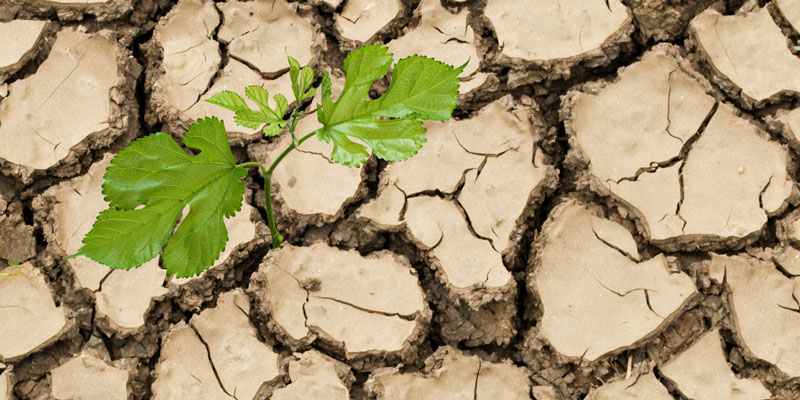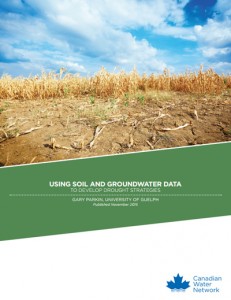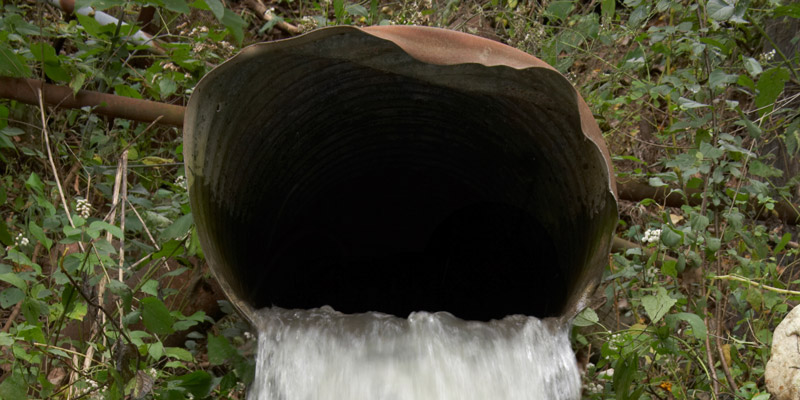Applying Soil Water and Groundwater Data to Developing Drought Adaptation Strategies
Principal Investigator - Gary Parkin, Associate Professor, University of Guelph, 2013 - 2014

Challenge
In 2012, much of southern Ontario received well below average precipitation, which caused a significant drop in forage production. Drought during growing seasons can have a significant impact on crop yield, particularly for field crops that are not irrigated, such as forage, wheat, soybean and corn. Farmers are continually seeking better management systems to reduce the severity and variability of drought impacts.
Two projects sought to address this challenge:
- Project 1: [2008– 2012]Towards Economic and Environmental Sustainability in Agriculture through the Implementation of Combined Beneficial Management Practices and Remedial Approaches Designed to Minimize Impacts to Water Quality, David Rudolph, University of Waterloo
This project explored the amount of daily tile drainage, groundwater recharge, and nitrate leaching using soil hydrology model, DRAINMOD, on a year-round basis in 12 regions of Ontario to provide information on the variability of optimum corn planting dates in each region.
- Project 2: [2004 – 2007]Validation and Use of Two Models for Estimating Optimum Crop Planting Dates, Soil Water Balance, and Nitrogen Leaching, Gary Parkin, University of Guelph
Two models (SHAW and DRAINMOD) were used to estimate water and nitrogen budgets for 12 regions of Ontario. Models were validated using field data for soil water content and temperature.
Applying DRAINMOD outputs from the initial projects provides a new opportunity to summarize historic drought impacts on corn yield. Not only does the model’s database contain information on drought impacts in each of the 12 regions over a 48-year period, it also includes the effect of three different soil textures on yield. Thus, the first objective of the proposed study is to extend soil hydrology modeling results to assess risk of drought impacts on crop yield.
There has been little long-term research on the impacts of enhanced soil moisture retention on crop yield under no-tillage conditions during periods of drought. To address this knowledge gap, the second objective of this study is to apply hourly measured soil water contents over a 10-year period (2001 –2010) under no-till and conventional till systems to determine if no-till systems conserve soil moisture and enhance crop yields.
Project
The proposed research builds upon the results of the two initial projects. One of the DRAINMOD results not analyzed in the initial project is the reduction in corn yield due to growing-season dry periods. This data will be used to statistically assess regional variability and soil textural differences on drought impact, which has never been done on the proposed scale – a 48-year period, across 12 regions of Ontario, using 3 soil textural classes. Economic losses due to drought will be estimated using corn prices that existed over the 48-year period.
Field measurements of soil moisture storage and temperature were collected from two different tillage systems – no-tillage and conventional tillage – between 2001 and 2010 at the Elora Research Station. This time series will be statistically analyzed to determine differences between the two tillage treatments in relation to crop yield and weather conditions.
Estimates of annual corn crop yield reduction will provide economic information for farmers to use as part of their decision-making process on whether to adopt a drought-resistant agronomic system, such as no-tillage. For instance, if the outcome shows a significant average annual economic loss due to drought, it may encourage more farmers to switch from a conventional tillage to no-tillage management system.
Both model results and field data will be applied to determine whether soil moisture and water table depth can be used to estimate future droughts by comparing values with long-term averages immediately prior to a drought-impacted growing season.
In summary, the project will produce the following knowledge:
- DRAINMOD estimates of annual corn crop yield reduction as a result of drought conditions
- Field-measured differences of soil moisture and temperature between no-till and conventional till systems
- A drought risk predictor based on water table depth and soil moisture storage
Outputs
The anticipated outputs include:
- Presentations at farmer meetings, including Farmsmart and Southwest Agricultural Conference in January 2015
- Articles for farming community publications, including Country Guide
- Dissemination of results on a website dedicated to soil water budget issues in Ontario
Outcomes
Anticipated Outcomes Include:
- Increased knowledge related to economics, to aid in decision-making processes
- Increased knowledge of hydrology related to drought risk in Ontario
- Informed investment decisions in relation to potential adoption of drought-resistant agronomic system




